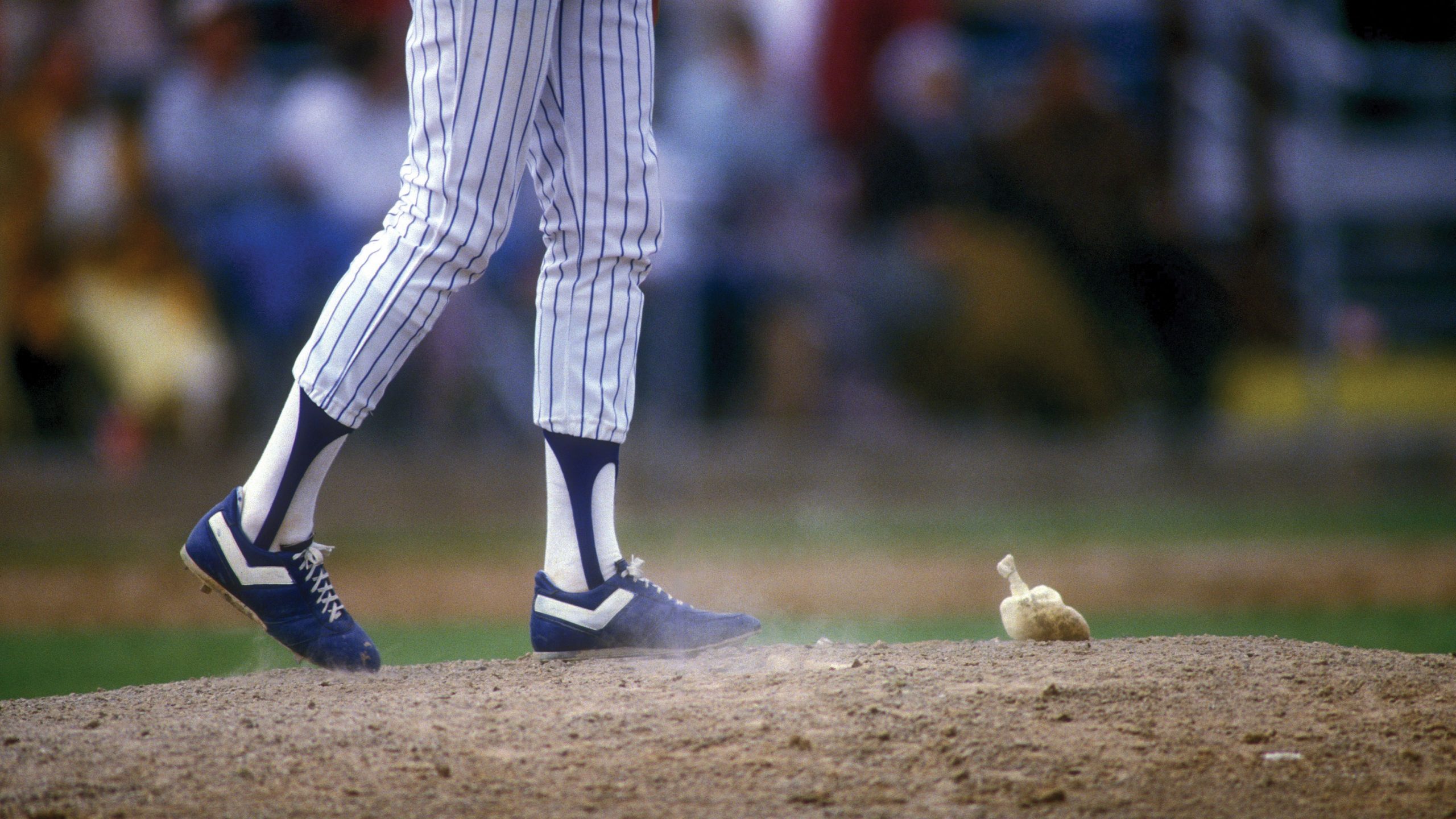The humble, unobtrusive rosin bag, a staple of pitcher’s mounds and on-deck circles, once precipitated a crisis between the old National and American Leagues. Rosin is produced when liquid resin collected from the longleaf pine in the South Atlantic and eastern Gulf states—or from pines and conifers in the far east—is heated in stills and separated into turpentine and fluid rosin, which passes through straining wadding to be purified. The resulting substance is used by violinists on their bows and, in powdered form, by gymnasts and baseball players on their hands. So why do pitchers find the stuff indispensable?
WHY
Rosin is used to keep pitchers’ hands dry and to improve hitters’ grip on the bat. Some pitchers use it irregularly on certain pitches; others use it constantly, as Pat Hentgen did. “I put it on my forearm because of the way I sweated,” says Hentgen, who pitched in 14 major-league seasons and won the Cy Young with the Toronto Blue Jays in 1996. “Used it with all my pitches.” The rosin bag is supposed to be kept on the back of the mound, but Hentgen says that’s not always the case: “I played with a guy who always kept it on the mound beside him. Like it was going to distract the hitters or something. The umpires would always have to ask him to move it.”
That’s not the only thing pitchers do with rosin. “Putting rubbing alcohol on with it makes it like sunscreen, and it makes your hand really sticky,” says Hentgen. Indeed, while everybody fixates on pitchers loading up with pine tar, it’s been an open secret for three seasons that applying BullFrog sunscreen, going to the mound and immediately putting rosin all over the arm creates a sticky paste, increasing a pitcher’s grip. Or, as hitters call it, doctoring the baseball. You know: cheating.
WHEN
Peter Morris’s book A Game of Inches: The Stories Behind the Innovations That Shaped Baseball, claims the first reference to the use of rosin is found in an 1887 game report in the Cincinnati Enquirer, and in 1893, the Sporting News noted that one team had used rosin “about a half-dozen times” during a season because the ball kept getting “greased” in the outfield.
Christy Mathewson told reporters in 1912 that some teams—in this case, the Pittsburgh Pirates—were mixing soap and water into the dirt around the pitcher’s mound, so that any pitcher reaching down for dirt would instead find himself with slimy hands. The home team’s pitchers, of course, were told where the dry dirt could be found. Bugs Raymond, a teammate of Mathewson’s, used rosin to counteract the soap and is said to have walked up to Pirates manager Fred Clarke at the end of the game and tossed a bag of dark-coloured rosin at his feet, telling Clarke he wished “you’d keep a supply for me out there.” Although it became accepted practice for pitchers to carry a small bag of rosin or a pumice stone in their back pocket, in 1919 baseball decided to crack down on the use of foreign substances by pitchers—and rosin was included in the prohibited list. But it proved difficult to enforce: Pitchers filled handkerchiefs with rosin and stuck them in their pocket, and since there was no prohibition on using rosin to improve grip on the bat, it was common to see pitchers spending a great deal of time around the bat rack while their team was hitting.
It was a dramatic increase in offence that pushed the National League to consider throwing pitchers a sop in 1925, suggesting that umpires provide pitchers with a rosin bag on request. This was a time of political tension between the National and American leagues—which had their own presidents, umpires and offices—and after first indicating it was interested in going along with the NL, the AL decided against allowing the use of rosin bags. Later, AL president Ban Johnson bowed to pressure from the commissioner’s office by allowing bags on the mound, but then threatened AL pitchers with fines if they used them.
This odd stalemate remained until 1931, when the new president of the AL, Will Harridge, lifted the ban. The rosin bag was first used in an AL game between the New York Yankees and the Washington Senators; the Washington Post reported that neither Yankees starter Ed Wells nor the Senators’ Lloyd Brown used it until the fourth inning.
GETTING A GRIP ON IT
So, since most experts believe pitchers already hide all manner of tacky stuff inside their gloves, under their hats or (hello, Clay Buchholz) in their hair, are we moving toward pitchers being allowed something other than rosin to help with grip? After all, the game is full of hard throwers, and you’d think the average hitter might appreciate knowing that the guy on the mound throwing 98 has some control over where it’s going. There’s been more and more reasoned discussion about the matter, since people seem to view it as a grip aid instead of a doctoring agent. “I’ve talked to hitters about this, and they don’t seem to care,” says Hentgen, now an adviser with the Blue Jays. “Guys who use pine tar will do it whether it’s legal or not.”










